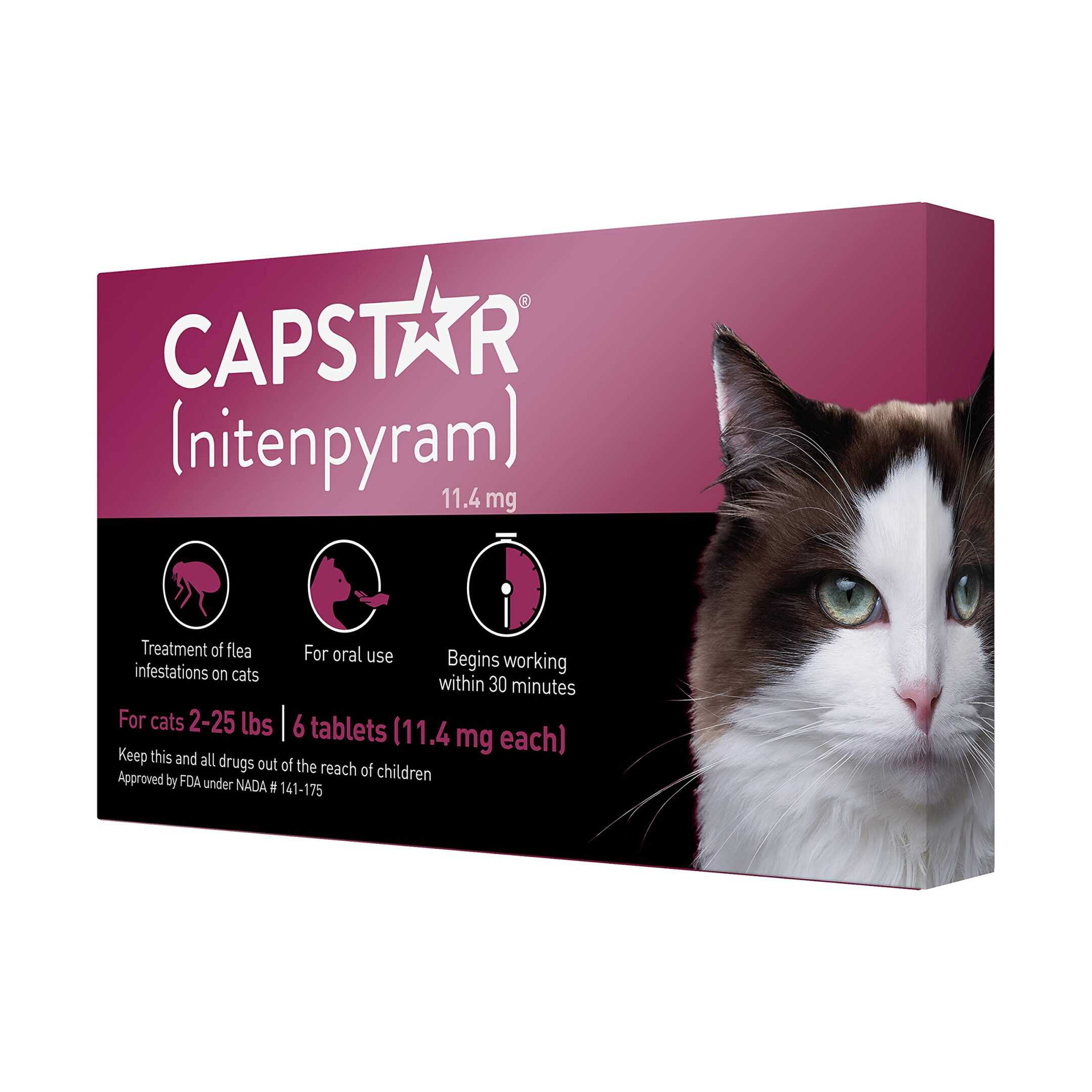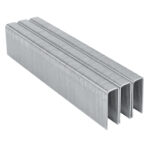Dealing with a flea infestation in your cat can be frustrating. Capstar offers a quick solution to knock out adult fleas fast. For cats weighing 2-25 pounds, give one Capstar tablet (11.4 mg nitenpyram). This dosage starts killing fleas within 30 minutes.
Capstar works rapidly but briefly. It kills adult fleas on your cat for 24-48 hours. For ongoing protection, you’ll need to use it with other flea treatments. Capstar is safe for kittens and cats at least 4 weeks old and 2 pounds in weight.
Always check your cat’s weight before giving Capstar. The tablet can be given directly or hidden in food. Watch to make sure your cat swallows it. Capstar is available without a prescription, making it easy to get when you spot fleas on your feline friend.
| Cat Weight | Capstar Dosage |
|---|---|
| 2-25 lbs | 1 tablet (11.4 mg) |
| Under 2 lbs | Not recommended |
Determining the Correct Capstar Dosage for Your Cat
Capstar is a popular flea treatment for cats and dogs. It works quickly to kill adult fleas, providing relief for your itchy feline friend. However, it’s crucial to give your cat the correct dosage of Capstar. Here’s a guide to help you determine the right amount.
Weight-Based Dosage
Capstar tablets are available in different strengths based on weight. Here’s the general breakdown:
- Cats and Kittens 2-25 lbs: One 11.4 mg tablet
It’s important to weigh your cat accurately before administering Capstar. If your cat falls outside of this weight range, consult your veterinarian for guidance on the appropriate dosage.
How to Administer Capstar
Capstar tablets can be given to cats in a few ways:
- Directly in the mouth: Place the tablet at the back of your cat’s tongue and gently close their mouth. You can also use a pill popper to make this easier.
- Hidden in food: Crumble the tablet and mix it with a small amount of wet food or a tasty treat.
If you’re unsure whether your cat swallowed the pill, it’s safe to give a second dose. However, it’s best to avoid giving more than one dose per day unless directed by your veterinarian.
Important Considerations
- Age: Capstar is safe for kittens 4 weeks and older.
- Pregnancy and Nursing: Capstar is generally safe for pregnant and nursing cats, but it’s always best to consult your veterinarian first.
- Side Effects: Capstar is typically well-tolerated, but some cats may experience mild side effects like increased scratching, hyperactivity, or vomiting. These side effects are usually temporary.
- Reinfestation: Capstar only kills adult fleas. It doesn’t prevent future infestations. Use a long-term flea preventative to keep your cat protected.
Capstar Dosage for Cats
| Cat’s Weight | Capstar Dosage |
|---|---|
| 2-25 lbs | One 11.4 mg tablet |
Always consult your veterinarian if you have any questions or concerns about using Capstar for your cat. They can provide personalized advice based on your cat’s health and needs.
Understanding Capstar and Its Mechanism of Action
Capstar is a fast-acting oral flea treatment for cats. It targets adult fleas quickly and effectively using a unique chemical process.
Active Ingredient and Efficacy
The active ingredient in Capstar is nitenpyram. This compound belongs to the neonicotinoid class of insecticides. Nitenpyram works by binding to receptors in the flea’s nervous system. This action disrupts nerve impulses and leads to paralysis and death of the flea.
Capstar starts working within 30 minutes of administration. It can kill over 90% of adult fleas on a cat within 6 hours. The rapid action helps provide quick relief from flea infestations.
| Capstar Efficacy | |
|---|---|
| Onset of action | 30 minutes |
| Peak efficacy | 6 hours |
| Fleas killed | Over 90% |
Lifecycle of Fleas and How Capstar Interacts
Fleas have four life stages: egg, larva, pupa, and adult. Capstar specifically targets adult fleas. It does not affect eggs, larvae, or pupae.
When an adult flea jumps on your cat, it must bite to feed. As it ingests blood containing nitenpyram, the flea becomes affected. The compound acts quickly to paralyze and kill the flea.
Capstar remains active in your cat’s system for about 24 hours. During this time, it will kill any new adult fleas that land on your pet. However, it does not provide long-term protection against future infestations.
For complete flea control, you may need to combine Capstar with other treatments that target different flea life stages.
Dosage Guidelines for Capstar in Cats
Proper dosing of Capstar for cats is crucial for effective flea control. The amount given depends on the cat’s weight and age.
Dosage Calculation and Administration
Capstar tablets for cats come in a single strength of 11.4 mg nitenpyram. The recommended dose is 1 mg per 2.2 pounds of body weight. For most cats, this means one tablet per treatment.
Here’s a simple dosage guide:
| Cat Weight | Capstar Dose |
|---|---|
| 2-25 lbs | 1 tablet |
| Over 25 lbs | 2 tablets |
To give Capstar, place the tablet directly in your cat’s mouth or hide it in a small amount of food. Ensure your cat swallows the full dose.
You can repeat the treatment daily if needed. Capstar starts working within 30 minutes and kills adult fleas for 24 hours.
Considerations for Kittens and Nursing Cats
Capstar is safe for kittens 4 weeks and older weighing at least 2 pounds. For very young or small kittens, consult your vet before use.
Nursing cats can receive Capstar if they meet the age and weight requirements. It’s generally safe but may pass through milk in small amounts.
Always monitor kittens and nursing cats for side effects like excessive grooming or lethargy after treatment. If you notice any unusual behavior, contact your vet.
Remember to treat all cats in your household to prevent flea reinfestation.
Side Effects and Precautions
Capstar for cats can cause some adverse reactions. While most are mild, serious side effects may occur in rare cases.
Common Adverse Reactions
Capstar may cause side effects in cats, including hyperactivity, panting, and lethargy. Some cats experience itching or excessive scratching as the fleas die off. Decreased appetite and vomiting can also occur.
Mild gastrointestinal upset is possible. This may lead to temporary diarrhea or soft stools in some cats. These effects typically resolve on their own within 24 hours.
If your cat seems overly agitated or vocal after taking Capstar, provide a quiet space to rest. The hyperactivity usually subsides as the medication takes effect.
Serious Side Effects and Veterinary Intervention
While rare, severe reactions can happen. Watch for signs of an allergic response like facial swelling, hives, or difficulty breathing. Seek emergency veterinary care if these occur.
Neurological problems have been reported in a small number of cases. These often involve cats that are too young or small for the medication. Only give Capstar to cats over 2 pounds and at least 4 weeks old.
| Symptom | Action |
|---|---|
| Mild vomiting/diarrhea | Monitor, call vet if persists |
| Lethargy | Provide quiet rest area |
| Facial swelling/hives | Seek emergency care |
| Seizures | Immediate veterinary attention |
Contact your veterinarian if side effects are severe or don’t improve. They can advise on managing reactions or alternative flea treatments if needed.
Integrating Capstar into a Comprehensive Flea Management Plan
Capstar offers quick flea relief but works best as part of a broader strategy. Combining it with other treatments enhances effectiveness while exploring alternatives provides additional options for flea control.
Combining Treatments for Optimal Flea Prevention
Capstar can be used with other flea treatments to create a complete flea control plan. For long-term protection, pair Capstar with monthly topical treatments like Frontline. This combination kills existing fleas fast and prevents new infestations.
Apply the topical treatment first, then give Capstar to quickly eliminate adult fleas. Repeat Capstar as needed, up to once daily, while continuing regular topical applications.
Consider this flea control combination:
| Treatment | Frequency | Purpose |
|---|---|---|
| Capstar | As needed, up to daily | Quick kill of adult fleas |
| Topical (e.g. Frontline) | Monthly | Ongoing prevention |
This approach targets fleas at different life stages for comprehensive control.
Alternatives and Supplemental Flea Control Methods
While Capstar provides fast relief, other options can supplement or replace it in your flea management plan. Flea collars offer extended protection, lasting several months. Some cats may prefer collars to oral medications.
Oral flea treatments that work for 30 days are another alternative. These often protect against other parasites too, like heartworms or intestinal worms.
Environmental control is crucial. Vacuum frequently and wash your cat’s bedding regularly. Consider using flea-killing sprays or powders on carpets and furniture.
For severe infestations, professional pest control services may be necessary. They can treat your home and yard to break the flea life cycle.
Frequently Asked Questions
Capstar is an effective flea treatment for cats with specific dosage guidelines and safety considerations. Let’s address some common questions about its use.
What is the recommended dosage of Capstar for cats?
The recommended Capstar dosage for cats is 1mg per 2.2 pounds of body weight. For a 10-pound cat, you’d give 5mg of Capstar. Always follow your vet’s instructions or the product label.
Is Capstar a safe treatment option for kittens under 2 pounds?
Capstar is not recommended for kittens under 2 pounds or younger than 4 weeks old. It’s crucial to use it only on cats meeting these weight and age requirements to ensure safety.
How long will Capstar continue to be effective after administration to cats?
Capstar remains effective for 24 hours after administration. It kills existing fleas but doesn’t prevent new infestations beyond this period.
How frequently can Capstar be administered to my cat?
You can give Capstar daily if needed. But for long-term flea control, it’s often used with other treatments. Consult your vet for a tailored flea prevention plan.
What is the onset of action for Capstar in treating fleas on cats?
Capstar starts working quickly. It begins killing fleas within 30 minutes of administration. Most fleas will be eliminated within 6 hours.
Is there a risk of adverse reactions in cats when treated with Capstar?
Serious side effects are rare with Capstar. Some cats may experience mild reactions like scratching or hyperactivity. Stop use and contact your vet if you notice any concerning symptoms.
| Weight of Cat | Capstar Dosage |
|---|---|
| 2-4 lbs | 1 tablet (11.4 mg) |
| 4-6 lbs | 1 tablet (11.4 mg) |
| 6-8 lbs | 1 tablet (11.4 mg) |
| 8-10 lbs | 1 tablet (11.4 mg) |
| Over 10 lbs | 1 tablet (11.4 mg) |




